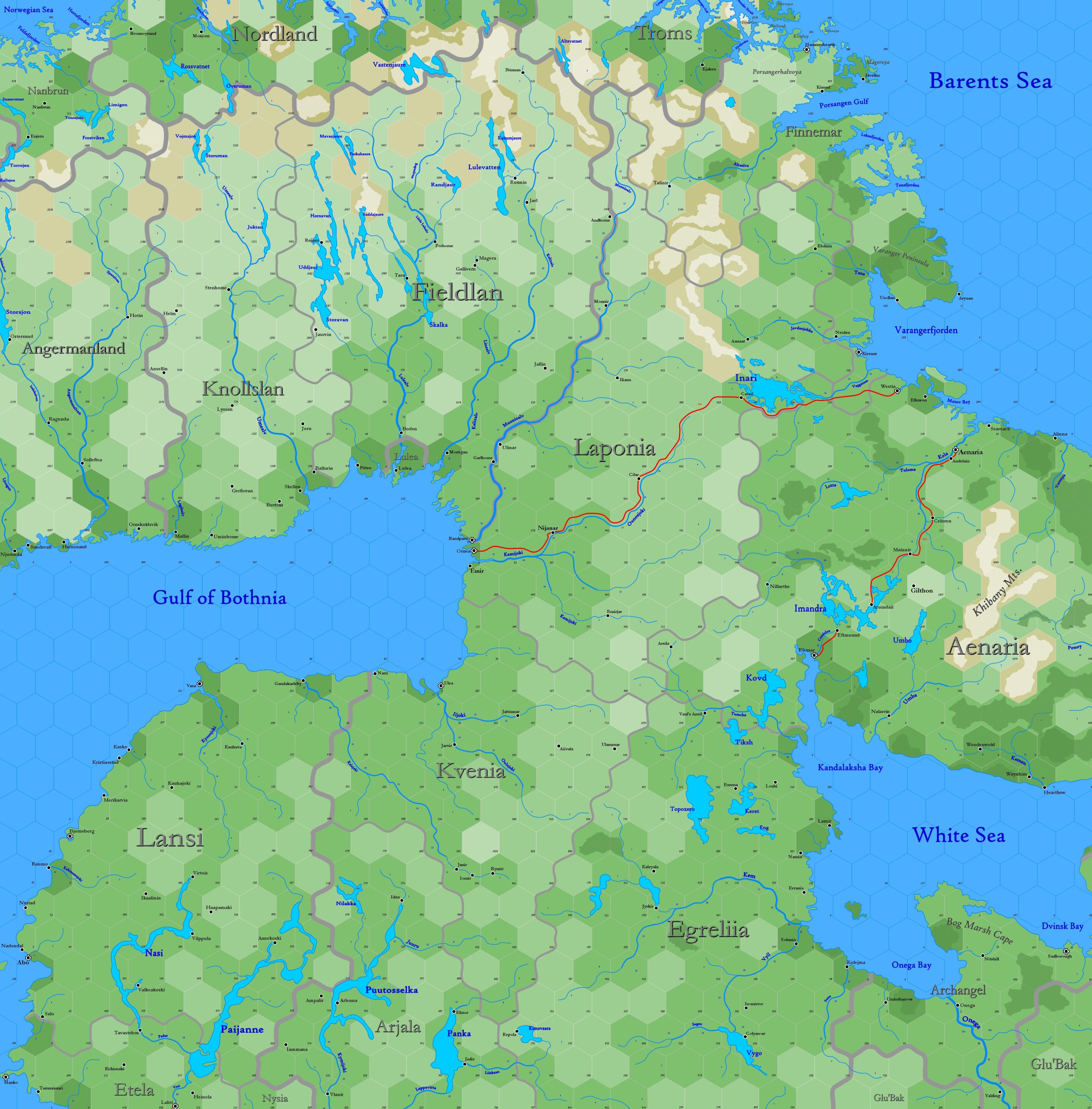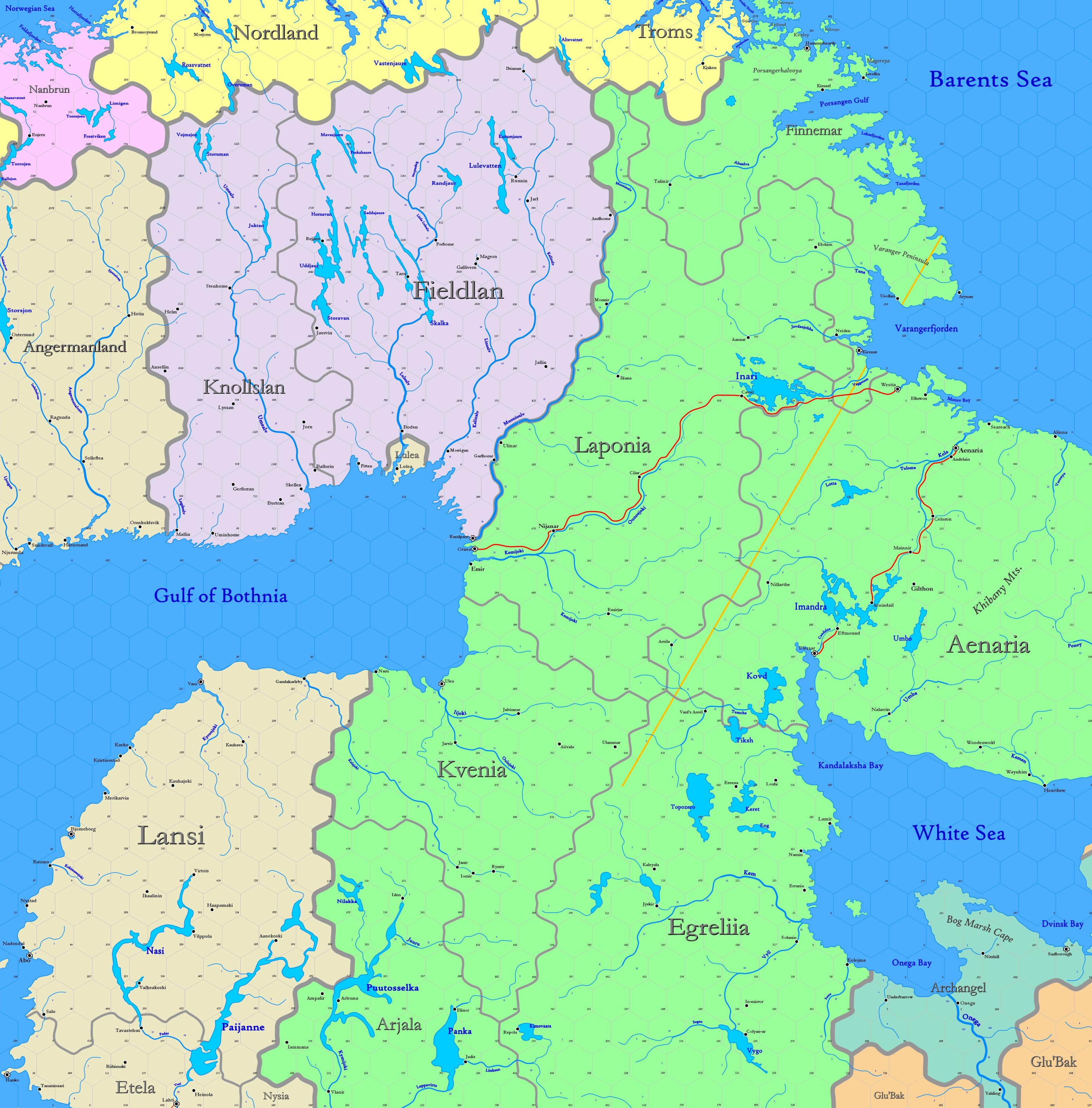Map B.02 - Lapland
Sub-arctic region reaching from 77.22°N south to 62.96°N, including the northern part of Scandinavia, as well as Karelia, between the shores of the Barents Sea, the Gulf of Bothnia and the White Sea. While Sweden controls the eastern edge of the map, the lands shown are predominantly occupied by elves and gnomes.
Hexes are 20 miles in diameter. Total area depicted equals 366,450 sq.m.
Features
Barents Sea
A portion of the Arctic Ocean, stretching northward from Finnemar and Aenaria. The sea is named after Willem Barents, who mapped the sea in the 16th century while searching for the Northeast Passage to China; it is called Edhellen by elves. The depth of this part is no more than 80 fathoms. Eddies and currents are numerous and complex, which contributes to the warm waters brought from the North Atlantic drift, so that the portion within 20-30 miles of land never freezes. Bergs are common beyond this passage. Although water temperatures vary from year to year, they are coolest in April and warmest in October. Except during this period, the remainder of the sea shown is frozen. Haddock, cod and plaice are plentiful and caught in large numbers.
Gulf of Bothnia
An extension of the Baltic Sea northward, separating Ulthuan and Lansi on the east from Vastenjaur and Angermanland on the west. The gulf is 60 mi. at its narrowest and about 350 mi. long. The gulf is covered by ice for 4 to 5 months a year, owing to the low salt content of the water; fresh water empties into it from many large rivers. The ice has been strong enough in some cold years to permit armies to move across it from Knollslan to Lansi.
There are fringing islands surrounding the gulf. The shores consist of sands and loams, which are covered with a growth of speckled alder in the climate of long, cold winters and short, warm summers, with almost continual daylight. Timber from the taiga or the subarctic forest of conifers, found on the shores, is cut and floated down the rivers to ports, where it is converted into lumber and shipped to all parts of the Atlantic seaboard. The Swedish market port of Lulea, an outpost negotiated with the gnomes of Vastenjaur, transships iron ore that is mined in Fieldlan.
Adjacent Maps
| A1: Greenland Sea | A2: East Spitsbergen |
A3: Jotunheim | |||||||||
| B1: Lofoten | B2: Lapland | B3: Yak'Margug | |||||||||
| C1: North Sea | C2: Baltic | C3: Lithuania- Poland |
C4: Upper Volga | ||||||||
See Sheet Maps

